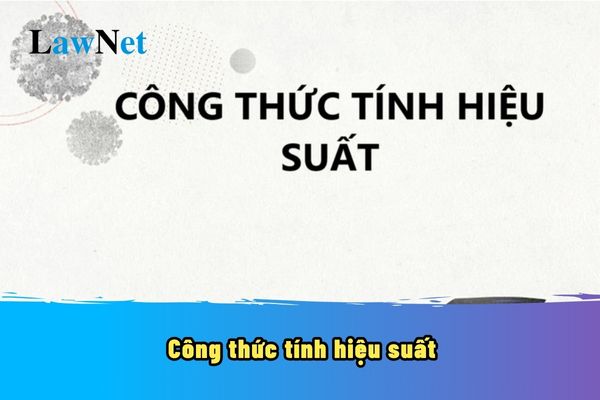What is the formula for calculating efficiency in Vietnam? What are the 03 academic topics in the 10th-grade Physics curriculum in Vietnam?
What is the formula for calculating efficiency in Vietnam?
Efficiency is a metric commonly used to assess the degree of completion of a process, a task, or a chemical reaction. It indicates the percentage of the ideal result that has been achieved.
|
What is the formula for calculating efficiency in Vietnam? *In chemistry, the formula for calculating reaction efficiency is often used: |
*Note: Information is for reference only./.

What is the formula for calculating efficiency in Vietnam? What are the 03 academic topics in the 10th-grade Physics curriculum in Vietnam? (Image from the Internet)
What is the grade at which the Physics curriculum covers the formula for calculating efficiency?
According to Section 5 of the General education program in Physics issued with Circular 32/2018/TT-BGDDT, the outcomes required for the 10th-grade Physics curriculum are as follows:
Power and efficiency:
- From several real-life situations, discuss to explain the physical significance and define power.
- Apply the relationship of power (or work rate) with the product of force and velocity in some real-life situations.
- From practical situations, discuss to define efficiency, apply efficiency in some real-life cases.
Thus, according to the above regulations, the formula for calculating efficiency will be taught in the 10th-grade Physics curriculum.
What are the 03 academic topics in the 10th-grade Physics curriculum in Vietnam?
According to Section 5 of the General education program in Physics issued with Circular 32/2018/TT-BGDDT, the academic topics in the 10th-grade Physics curriculum in Vietnam are as follows:
Topic 10.1. Physics in some professions
An overview of the development of physics:
- Discuss, propose, select a method, and implement a Learning Task to:
+ Briefly state the emergence and initial achievements of experimental physics.
+ Briefly state the role of Newtonian mechanics in the development of Physics.
+ List some major branches of classical physics.
+ State the crisis of physics at the end of the 19th century, which paved the way for the rise of modern physics.
+ List some major fields of modern physics.
Introduce research fields in physics:
- State research subjects; list a few simple theoretical models and some experimental methods of major fields in modern physics.
- Discuss, propose, select a method, and implement a Learning Task to explore models and scientific theories that have been developed and applied to improve current technologies and develop new ones.
Introduce applications of physics in some professions:
- Describe real-life examples of using physics knowledge in various fields (Military; Nuclear industry; Meteorology; Agriculture, Forestry; Finance; Electronics; Mechanics, automation; Information, communication; Scientific research).
Topic 10.2. Earth and the sky
Determine directions:
- Identify on a star map (or using practice instruments) the positions of constellations: Ursa Major, Ursa Minor, Cassiopeia.
- Determine the position of the North Star in the night sky.
Characteristics of visible motion of celestial bodies in the starry sky:
- Use a solar system model, discuss to state some basic characteristics of the visible motion of the Sun, Moon, Venus, and Mercury in the starry sky.
- Use Copernicus’ heliocentric model to explain some observable features of the Sun, Moon, Venus, and Mercury in the starry sky.
Some astronomical phenomena:
- Use images (or multimedia materials), discuss to explain briefly and qualitatively the phenomena of solar and lunar eclipses, and tides.
Topic 10.3. Physics with environmental protection education
The necessity of environmental protection:
- Discuss, propose, select a method, and implement a Learning Task to understand:
+ The necessity of environmental protection in national development strategies.
+ The role of individuals and communities in environmental protection.
Physics with education on environmental protection:
- Discuss, propose, select a method, and implement a Learning Task to understand:
+ The impact of current energy consumption on the environment, economy, and climate in Vietnam.
+ An overview of pollutants in fossil fuels, acid rain, nuclear energy, ozone layer depletion, climate change.
- Discuss, propose, select a method, and implement a Learning Task to understand:
+ Classification of fossil and renewable energy.
+ The role of renewable energy.
+ Some basic technologies to obtain renewable energy.

